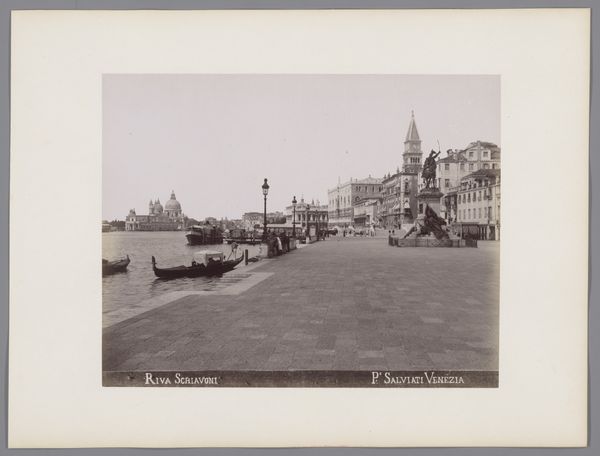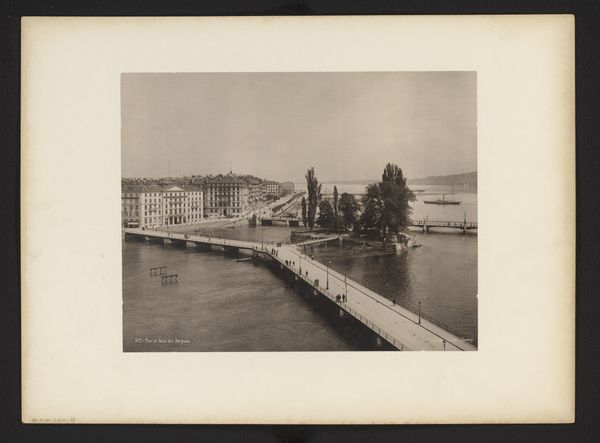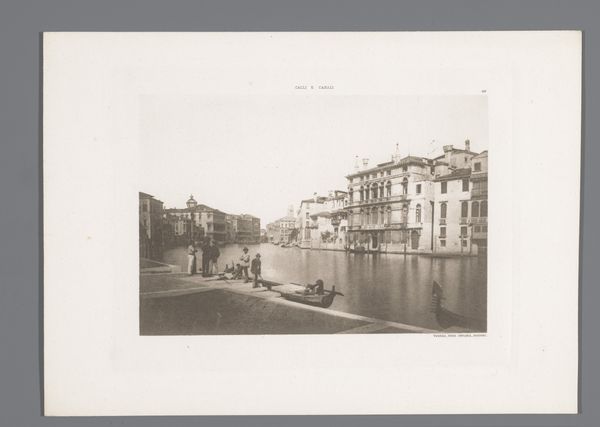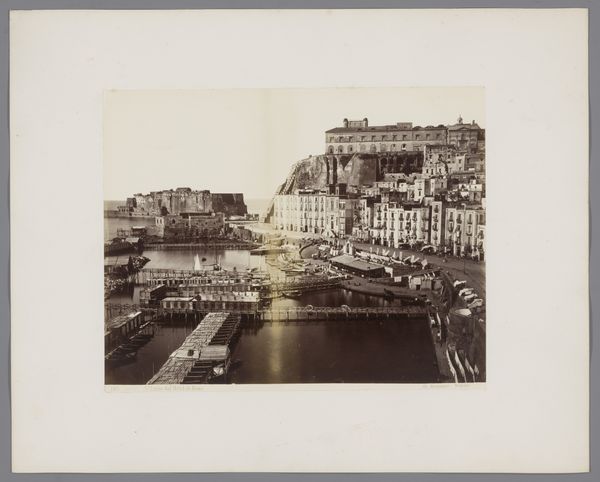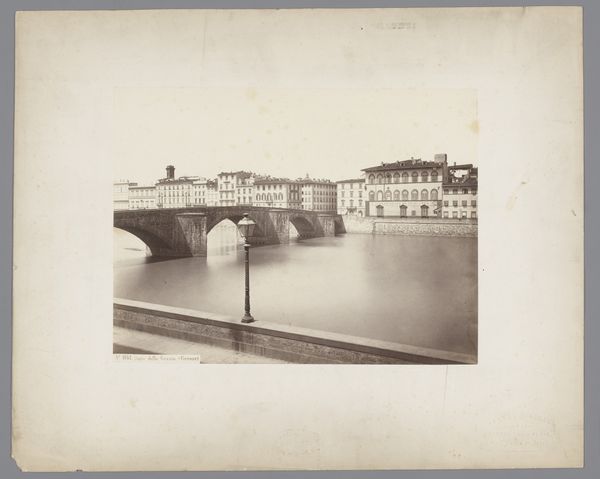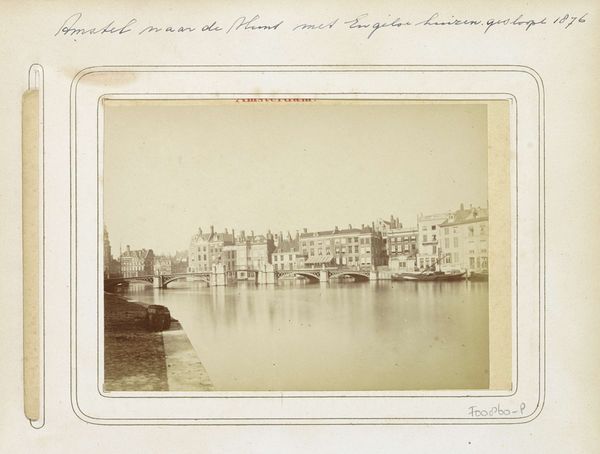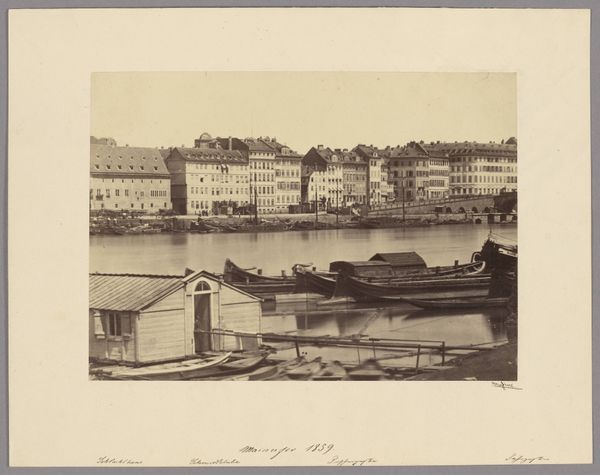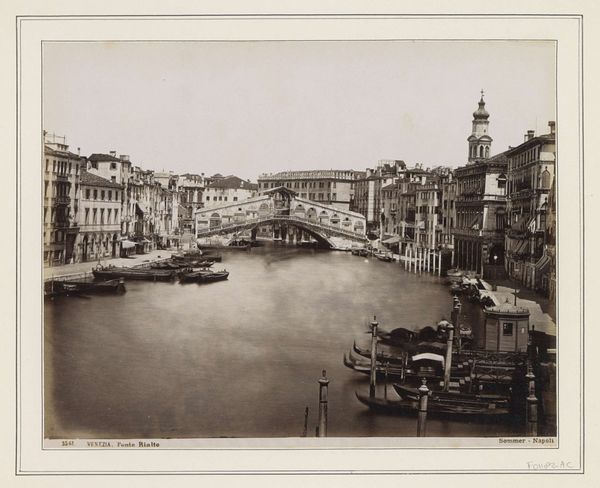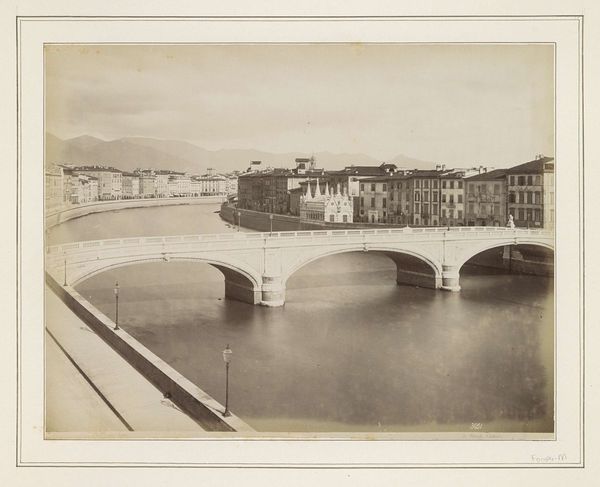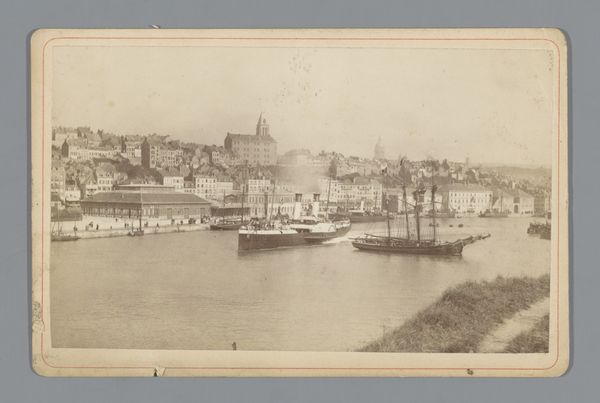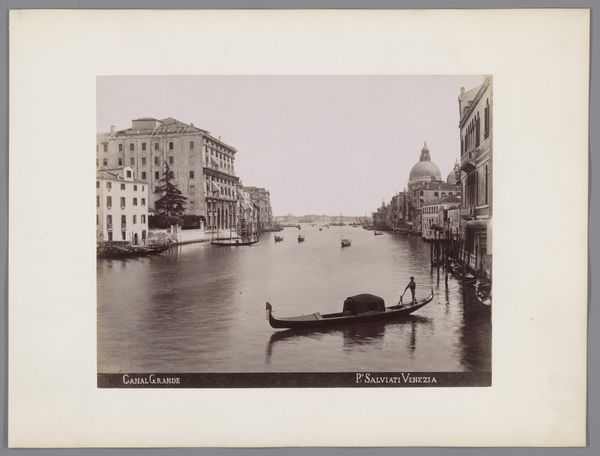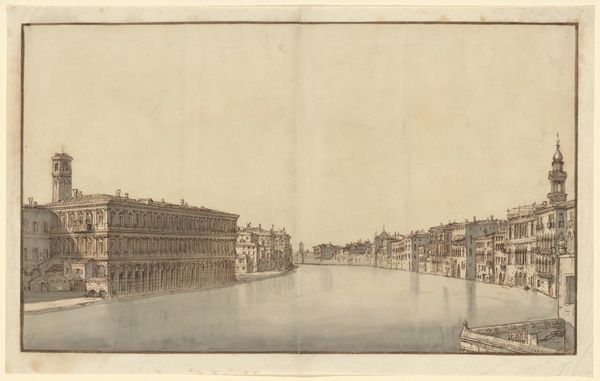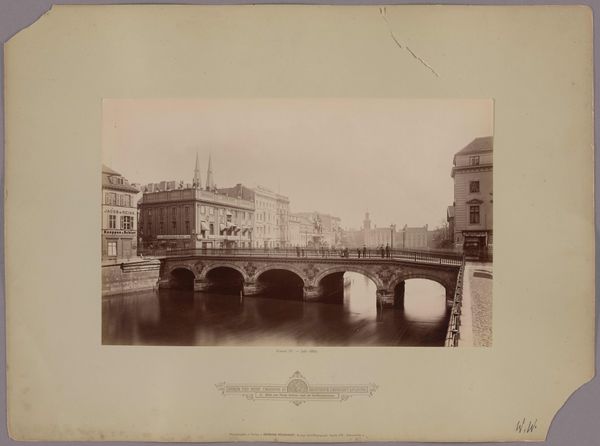
Gezicht op het Canal Grande en de Sante Maria della Salute te Venetië, Italië 1857 - 1914
0:00
0:00
photogram, photography
#
photogram
#
landscape
#
photography
#
cityscape
Dimensions: height 304 mm, width 375 mm
Copyright: Rijks Museum: Open Domain
Curator: This striking image is titled "Gezicht op het Canal Grande en de Sante Maria della Salute te Venetië, Italië" which translates to "View of the Grand Canal and the Sante Maria della Salute in Venice, Italy." It is credited to Giorgio Sommer, and dates roughly between 1857 and 1914. Editor: There's a melancholic beauty to this view. The monochromatic palette enhances the scene's quietness. It's almost haunting. I'm curious about the vantage point chosen by Sommer and how that dictates the narrative he constructs for the viewer. Curator: I find myself drawn to that vantage point as well. Placed on the ground, it gives perspective to the city itself. Consider Venice's identity in the 19th century. A site of leisure, but also a maritime center wrestling with shifting political and economic power. Sommer’s gaze, therefore, isn’t simply observational, it is historically situated. Editor: That tension you highlight really makes you question the experience of place. I am also wondering about the processes Sommer would have had to consider with materials limitations being different back then. How long an exposure was this, what chemicals were used? Curator: Excellent point. The act of photographing Venice during this period speaks to the city’s allure and its developing status as a prime location in the European Grand Tour, yet who does that grand tour truly cater for? Sommer's lens inadvertently documents Venice's position as a commodity, to be consumed by the wealthy and often to the detriment of locals and its infrastructure. Editor: Yes, even the choice of subject reinforces how even a photograph creates consumption around an artwork and an identity. This really feels more charged once we think of what materials would have been scarce and expensive back then, whose labor helped produce the paper, ink, the development process to arrive at this print for a European marketplace of art. Curator: Absolutely, it reminds us of the social relations involved. Understanding Sommer’s context reveals the complex historical and social dynamics within this deceptively serene image. Editor: Precisely! It underscores the power of interrogating not just the subject but also the means of its production and its consumption. Curator: Well, by juxtaposing art history with contemporary theory, and examining the very materials, we can see it's much more than just a beautiful picture postcard. Editor: Right. Examining how that vision even became tangible reveals that our gaze is anything *but* neutral!
Comments
No comments
Be the first to comment and join the conversation on the ultimate creative platform.

